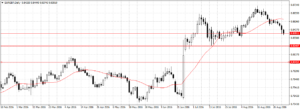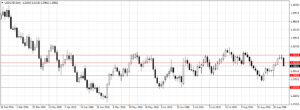Forex
Forex Weekly Outlook September 5 – 9
The U.S dollar was rattled last week by a series of weak economic data released towards the end of the week, the nonfarm payrolls report came out less than expected at 151,000 in August from 255,000 recorded in July, and this couple with weak productivity from the manufacturing sector (49.4) alerted the markets to the likelihood of the Federal Reserve relinquishing on its rate decision this year. This is because during the Jackson Hole speech, the Fed Chair Janet Yellen said if the economy continues to improve and productivity pick up that the Federal Open Market Committee will look into tightening interest rates, otherwise the FOMC will continue to monitor growth and acted only when necessary.
Nevertheless, the US trade deficit narrowed 11.6 percent in June to $39.47 billion in July, while imports dropped 0.8 percent and exports rose 1.9 percent. The improvement in exports was largely due to increased overseas orders of foods, feeds and beverages — especially soybeans. Meaning, it’s more likely to reverse going forward, but it will support third quarter overall growth.
While, some have argued that it is too early to deduce the Fed stance, the average hourly earnings says otherwise, for instance with unemployment near all-time low, average earnings shouldn’t be declining even if the unemployment rate (4.9%) drop. This for me signals the economy is recovering, not recovered yet. That I think the FOMC will like to see through, before tightening monetary policy.
The Japanese economy is probably the most affected by the weak US job report and here is why, the data released on Tuesday showed that household earnings increased and retail sales improved significantly amid moderate unemployment rate, although industrial output (49.5) and capital spending (3.1) are still weak due to weak oversea orders — the whole economy remained vibrant. This improvement is expected to rekindle the Japanese yen attractiveness as a haven asset, especially now that the weak nonfarm payrolls has substantially dent the odds of the Fed’s raising rates this year.
However, the increase in demand for the Japanese yen will worsen industrial output and exports, and prompts the Bank of Japan Governor Haruhiko Kuroda to reassess its limited monetary policy if manufacturing sector and sustained job creation are priorities.
In the UK, the economy has rebounded from Brexit pitfall, with business confidence on the rise. The purchasing manager index that hit record low amid Brexit growing concerns in July has gained back all the lost ground as companies have started hiring and overseas orders surged. This increase in shipment was as a result of the weak pound. So it is nimble to note that the fall in the value of the pound is also pushing up manufacturer’s cost of production and inflation as Britons needs more money to buy imported goods.
In the long term, this is a bit mixed, one, because market sentiment is volatile and this could be an overshoot upwards PMIs that needs to be cautiously watch. Two, if consumer prices start rising now, further stimulus from the Bank of England may not crystallize. On this note, EURGBP, USDCAD and GBPCHF top my list this week.
EURGBP
Since June 24, speculators have substantially driven this pair to over 3-year high. But the UK economy remains unperturbed by the negative business sentiment the Brexit decision generated and has gained 349 pips since August 16 when the first complete post-Brexit economic report was released. Another reason why I think EURGBP is a good sell, is the fact that the U.K positive economic data and the sentiment generate by the releases will revamp its currency’s outlook, while euro-area weak economic data will continue to weigh on the single currency for now.
If EURGBP sustained the breach of 0.8391 support, this will likely attract sellers’ interest this week and open up 0.8240 support level, our first target this week. As long as the price remained below 0.8448 resistance I am bearish on this pair.
USDCAD
After the Organization of the Petroleum Exporting Countries announced its willingness to discuss steps on how to cap production at its meeting this month in Algeria, global oil prices jumped. So did currencies of commodity dependent economies. The Canadian dollar consolidated for two days with a double gravestone doji before finally gaining back 50 percent of what it has lost since the odds of the Fed’s raising rates bolster the dollar.
This week, as long as price remains below 1.3033 resistance I am bearish on this pair with 1.2849 as the target, a sustained break of 1.2849 should give us 1.2674 provided OPEC go through with their promise and Fed’s position rates settled. forex is maintained
GBPCHF
The Swiss Franc like Euro single currency has lost 639 against since August 16th as explained above. Last week, Switzerland’s retail sales fell 2.2 percent in July after previously plunging 3.5 percent in June.
A sustained break of 1.3034 resistance will likely open up 1.3332, but if the inflation and GDP report due this week came out better than expected. This pair will pull back. Until then I am bullish on GBPCHF with 1.3332 as the target. forex target is defined


